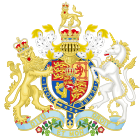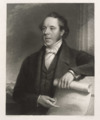Slavery Abolition Act 1833 facts for kids
| Act of Parliament | |

|
|
| Long title | An Act for the Abolition of Slavery throughout the British Colonies; for promoting the Industry of the manumitted Slaves; and for compensating the Persons hitherto entitled to the Services of such Slaves. |
|---|---|
| Citation | 3 & 4 Will. 4. c. 73 |
| Dates | |
| Royal assent | 28 August 1833 |
| Commencement |
|
| Repealed | 19 November 1998 |
| Other legislation | |
| Repealed by | Statute Law (Repeals) Act 1998 |
| Relates to | |
|
Status: Repealed
|
|
| Text of statute as originally enacted | |
The Slavery Abolition Act 1833 was a law passed by the Parliament of the United Kingdom. This important Act aimed to end slavery in most parts of the British Empire. It was introduced by Earl Grey's government.
This law made it illegal to buy or own enslaved people within the British Empire. However, it did not apply to areas controlled by the East India Company, such as Ceylon (now Sri Lanka) and Saint Helena. Even though the Act was later officially cancelled in 1998, other laws against slavery are still in place today.
Contents
The Slavery Abolition Act of 1833
Why Slavery Ended
People have tried to stop or limit slavery for a very long time. In 1080, William the Conqueror stopped the slave trade between Bristol and Ireland. Later, in 1102, a church council in London said that selling people "like animals" was wrong.
In 1772, a judge named Lord Mansfield made a ruling in a case called Somerset. He decided that slavery had no legal basis in England. This meant that a person could not legally be a slave in England. This decision helped start the movement to end slavery.
How People Fought for Freedom
By 1783, a movement to end the slave trade across the British Empire began. The Society for Effecting the Abolition of the Slave Trade was formed in 1787. In 1793, Upper Canada (part of modern-day Canada) passed the Act Against Slavery. This was the first law to ban the slave trade in any part of the British Empire.
By the late 1700s, Britain became a major supporter of ending slavery worldwide. This was a big change, as Britain had previously been the largest slave trader. William Wilberforce, a British politician, worked for 20 years to stop the slave trade.
In 1807, the British Parliament passed the Slave Trade Act of 1807. This law made the international slave trade illegal, but it did not ban slavery itself. However, people still continued to trade enslaved people. So, in 1811, a new law made the overseas slave trade a serious crime.
The Royal Navy (Britain's navy) created the West Africa Squadron. This group patrolled the coast of West Africa to stop the Atlantic slave trade. Between 1808 and 1860, they captured 1,600 slave ships and freed 150,000 Africans. Many of these freed people were resettled in Jamaica and the Bahamas. Britain also convinced other countries to sign agreements to end their slave trade.
Between 1807 and 1823, many people focused on stopping the slave trade, not slavery itself. However, by 1823, the sugar industry in the British Caribbean started to decline. This meant that the British Parliament no longer felt they needed to protect the business interests of sugar plantation owners.
In 1823, the Anti-Slavery Society was founded in London. Many important people were members, including Joseph Sturge, Thomas Clarkson, William Wilberforce, and Henry Brougham. Mixed-race campaigners from Jamaica, like Louis Celeste Lecesne, also joined.
In 1831, a large slave revolt called the Baptist War happened in Jamaica. It started as a peaceful protest led by a Baptist minister named Samuel Sharpe. The rebellion was put down by local forces and the British army. This rebellion caused a lot of damage and loss of life. Because of this, the British Parliament held two investigations. The findings from these investigations greatly helped lead to the Slavery Abolition Act of 1833.
Before this, rich sugar planters from islands like Jamaica and Barbados had a lot of power in Parliament. They could buy seats in Parliament and stop laws against slavery. This group was known as the West India Lobby. However, the Reform Act 1832 changed how Parliament worked. This made it easier for a majority of members to pass a law to end slavery across the British Empire.
What the Act Did
The Slavery Abolition Act passed easily in Parliament on July 22, 1833. This was just a week before William Wilberforce died. The law officially became active on August 28, 1833, and came into force on August 1, 1834.
When the Act first came into force, only enslaved children under the age of six were immediately freed. Enslaved people over six years old became "apprentices." This meant they were still forced to work, but their servitude was supposed to end gradually. The first group of apprentices became fully free on August 1, 1838. The last apprentices were set to be free on August 1, 1840.
The Act did not apply to areas controlled by the East India Company, such as Ceylon and Saint Helena. These exceptions were removed in 1843, making slavery illegal everywhere in the British Empire.
Payments to Former Slave Owners
The Act also included a plan to pay money to slave owners. The British government decided to pay £20 million to the registered owners of the freed enslaved people. This money was meant to make up for the loss of enslaved people, who were seen as "business assets." In 1833, £20 million was a huge amount of money. It was 40% of the government's yearly income or about 5% of Britain's total economic output at the time.
To get this money, the British government took out a £15 million loan in 1835 from bankers Nathan Mayer Rothschild and Moses Montefiore. The remaining £5 million was paid directly in government bonds.
Some people have said that British taxpayers continued to pay off this debt until 2015. This is partly true because of how the government managed its debt over a long period. The debt from the Slavery Abolition Act was combined with other government debts. It was only in 2015, when the government updated its financial system, that it was certain this specific debt was fully paid off. So, taxpayers' money did help pay off the debt that came from the Slavery Abolition Act.
About half of the money went to slave-owning families in the Caribbean and Africa. The other half went to owners who lived in Britain. Many of these owners were from wealthy or high-ranking families. For example, Henry Phillpotts, a bishop, received £12,700 for 665 enslaved people. Henry Lascelles, 2nd Earl of Harewood received £26,309 for 2,554 enslaved people on his plantations.
Protests and Full Freedom
On August 1, 1834, when the Act came into force, there were protests. In Port of Spain, Trinidad, a group of mostly older people chanted, "Pas de six ans. Point de six ans" ("Not six years. No six years"). They were protesting the idea of the six-year apprenticeship period. Peaceful protests continued until the apprenticeship system was ended early. Full freedom for all enslaved people was granted on August 1, 1838, two years ahead of schedule.
What Happened After the Act
Even after the Act, some secret slave trading still happened in the British Empire. For example, in 1854, Nathaniel Isaacs was accused of slave trading. However, the legal papers for his case were lost, so the court could not continue the prosecution.
The Act also did not ban other types of forced labor, like indentured servitude (where people worked for a period to pay off a debt) or blackbirding (tricking or forcing people into labor).
Slavery became completely illegal throughout the British Empire, with no exceptions, in 1858. This happened when the British government took direct control of the territories that were previously owned by the East India Company.
A new group, the British and Foreign Anti-Slavery Society, was formed in London in 1839. This group worked to end slavery worldwide. It is now known as Anti-Slavery International and is the world's oldest international human rights organization.
Images for kids
-
Illustration from the book: The Black Man's Lament, or, how to make sugar by Amelia Opie. (London, 1826)
-
Portrait of abolitionist Thomas Clarkson, circa 1840, after Henry Room; on the scroll is "Slavery abolished; Jamaica; August 1st 1838", the date the apprenticeships ended
-
Poster for an event in Worcester, Massachusetts in 1849, commemorating the end of slavery in the British West Indies
See also
- 1926 Slavery Convention
- Act Against Slavery
- Blockade of Africa
- Brussels Conference Act of 1890
- Centre for the Study of the Legacies of British Slavery
- Indian Slavery Act, 1843
- Slave Trade Acts
- Slavery in Britain
- Thirteenth Amendment to the United States Constitution
- Timeline of abolition of slavery and serfdom





